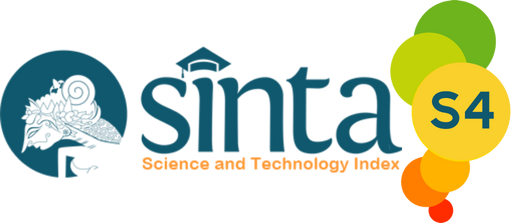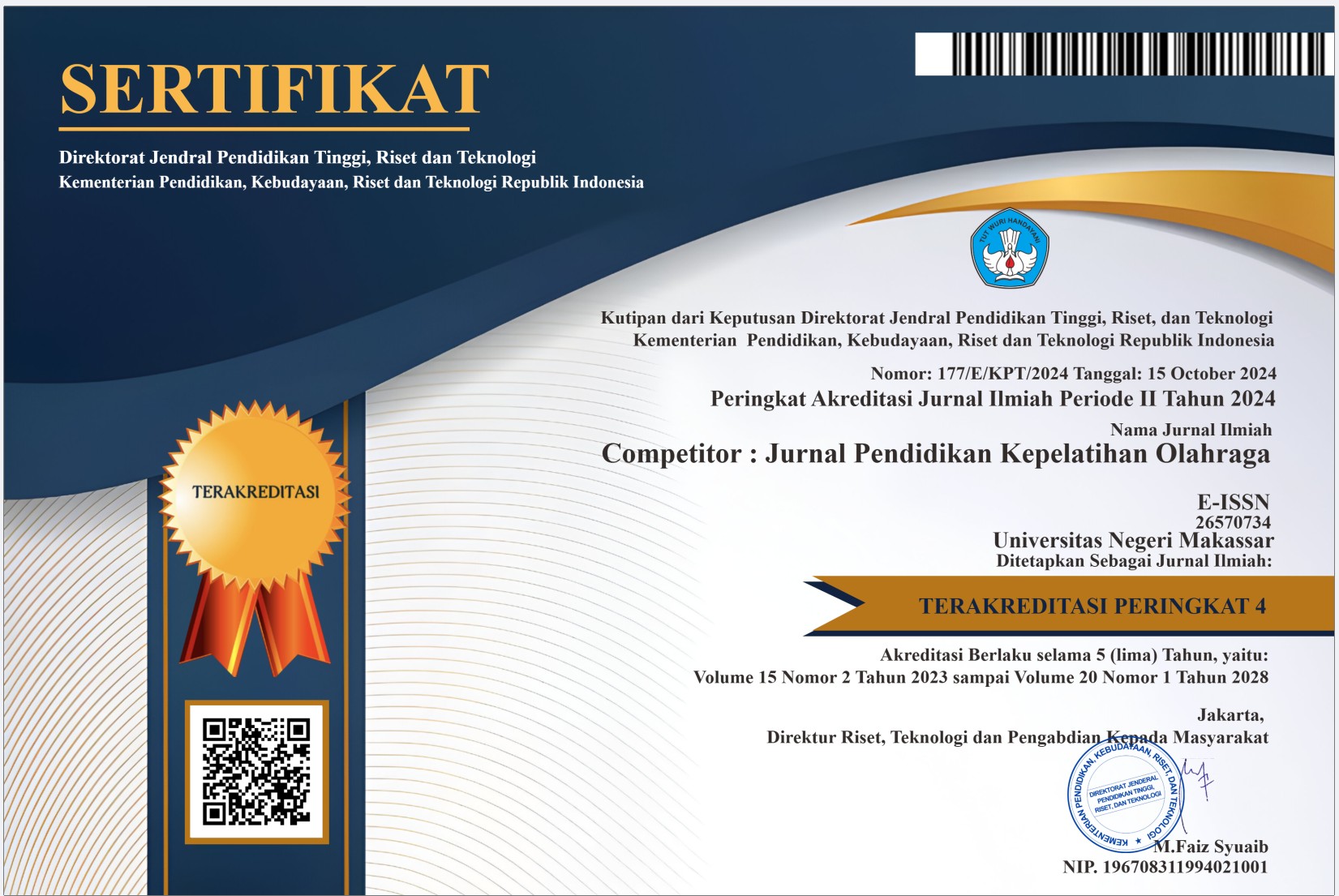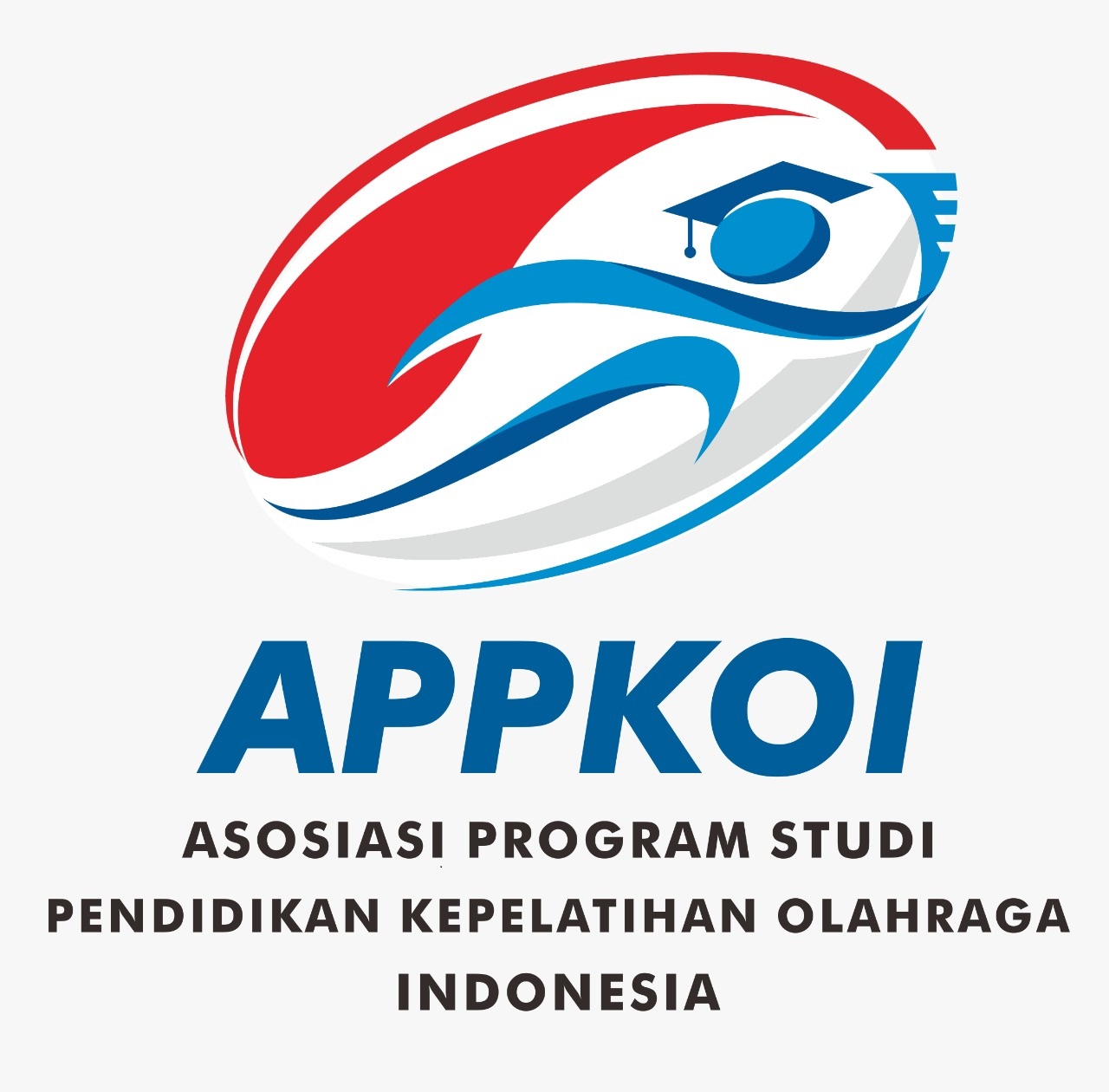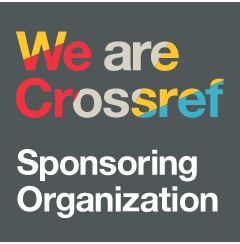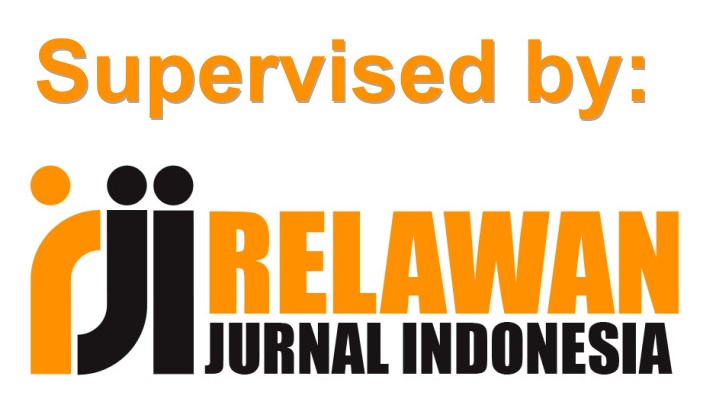Survey of Basic Skills of Sepak Takraw Games In Grade V Students of SD BK Bolobia
DOI:
https://doi.org/10.26858/cjpko.v17i3.320Keywords:
basic skills, soccer , survey, physical educationAbstract
This study aims to determine the level of basic soccer skills in fifth-grade male students at BK Bolobia Elementary School. The method used was a descriptive survey with a sample of 9 students. The instrument used was a consecutive soccer practice test, which counted the number of consecutive kicks without the ball touching the ground. The measurement results were categorized into five skill levels: Very Poor, Less, Sufficient, Good, and Very Good. The results showed that the majority of students were in the Very Poor (22.22%), Less (22.22%), Sufficient (22.22%), and Good (22.22%) categories, while only 11.11% of students were included in the Very Good category. Based on these results, it can be concluded that students' basic soccer skills are generally in the Sufficient category with an uneven distribution of abilities. These results indicate the need for a targeted and sustainable improvement of basic technique training programs in physical education learning in elementary schools.
References
Abidin, A. (2022). Improving Basic Volleyball Technical Skills through Training Variation Methods. Journal of Sports and Achievement, 10(2), 122–129.
Budiwanto, A. (2012). Sports Psychology: Theory and Application in Learning. Surabaya: Unesa University Press.
Hanif, A. (2015). Basic Sepak Takraw Technique Training Model for Beginners. Yogyakarta: Faculty of Sports Science, UNY.
Idricha, R. (2019). Physical Education for Elementary Schools. Padang: UNP Press.
Ismail, H., & Tunggul, D. (2020). The role of sports in shaping the character of early childhood. Journal of Sports, 8(1), 45–51.
Lestari, R., Saptani, A., & Alif, M. (2025). The effect of modified training on elementary school students' ball control skills. Indonesian Journal of Physical Education, 12(1), 22–30.
Makarova, A., Mikhaylova, A., & Kharisova, I. (2021). The effectiveness of integrative methods in physical education in primary schools. Journal of Physical Education and Sport, 21(1), 92–97.
Mulyana, D. (2020). Quantitative Research Methodology in Education. Bandung: Remaja Rosdakarya.
Nurhasan. (2007). Tests and Measurement in Physical Education. Jakarta: Department of National Education.
Prasetyo, A. (2015). Basic techniques of overhead passing in volleyball. Sports Journal, 1(2), 56–60.
Pratiwi, N., Nugroho, A., & Setiawan, R. (2020). Basic volleyball techniques in physical education (PJOK) learning. Journal of Sports Education, 9(3), 187–193.
Putro, RH, Suryadi, I., & Wahyuni, D. (2020). The role of the setter in volleyball: A descriptive study of students. Journal of Sports Science, 5(1), 77–85.
Rusu, M. (2017). The importance of the setter in volleyball. Science, Movement and Health, 17(2), 119–123.
Setyawan, B. (2017). Volleyball and its health benefits. Journal of Recreational Health Education, 3(1), 41–49.
Sugiyono. (2015). Educational Research Methods: Quantitative, Qualitative, and R&D Approaches. Bandung: Alfabeta.
Sugiyono. (2019). Educational Research Instruments. Bandung: Alfabeta.
Supriyono, S. (2018). The effect of training intensity on students' basic motor skills. Journal of Sports Science, 7(2), 90–97.
Tampubolon, T. (2015). History and development of sepak takraw. In Hanif, A. Basic Sepak Takraw Technique Training Model (p. 27). Yogyakarta: FIK UNY.
Thomas, L., Reilly, T., & Williams, A. (2021). Video feedback in youth sport training: Enhancing skill acquisition. Journal of Sports Sciences, 39(5), 456–464.
Wahyuni, S. (2018). Educational Research Methodology. Malang: Nusantara Literacy.
Downloads
Published
Issue
Section
License
Copyright (c) 2025 Firsan, Didik Purwanto, Rahmah, Hendriana Sri Rejeki (Author)

This work is licensed under a Creative Commons Attribution 4.0 International License.

